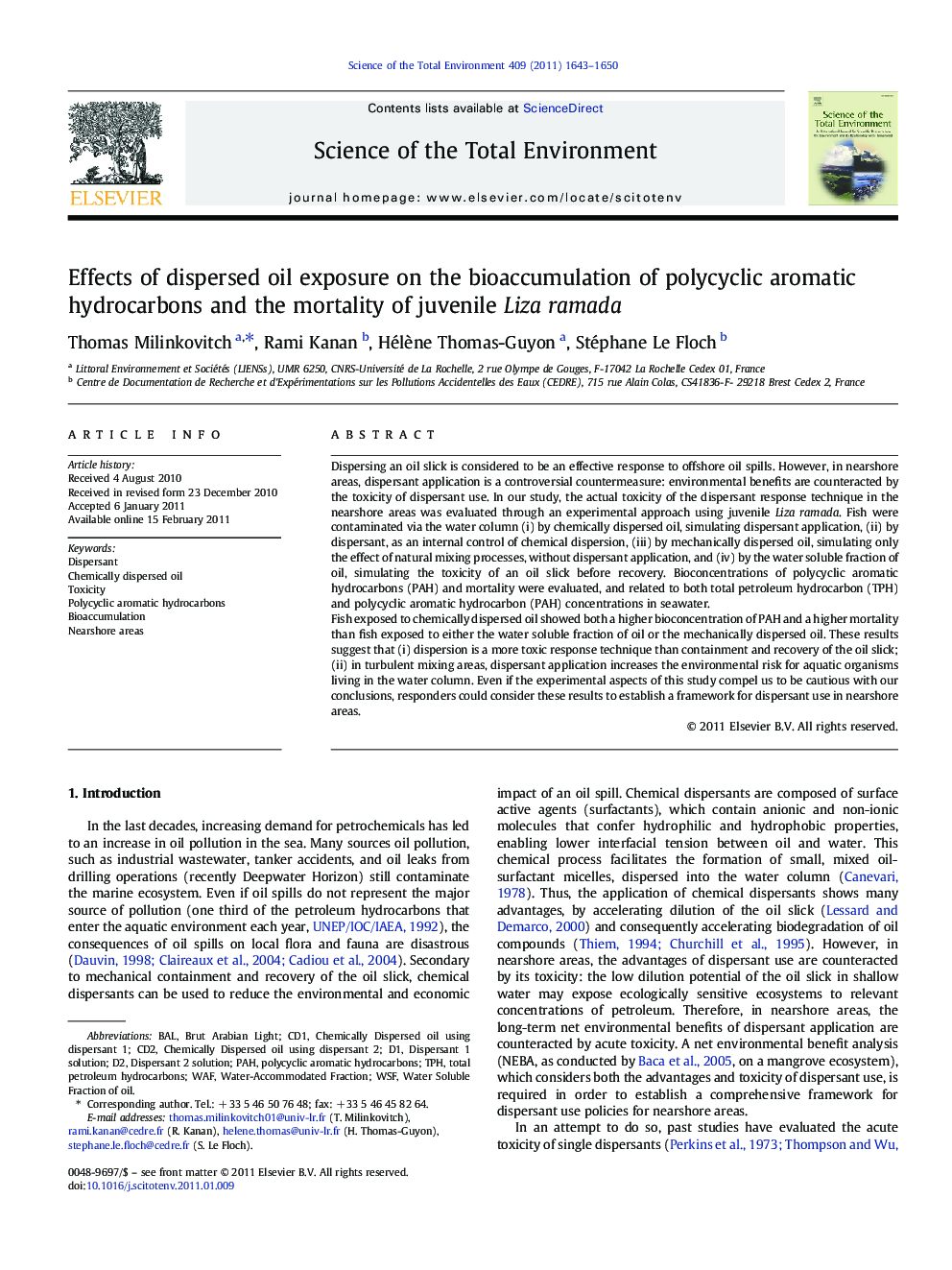| کد مقاله | کد نشریه | سال انتشار | مقاله انگلیسی | نسخه تمام متن |
|---|---|---|---|---|
| 4430651 | 1619853 | 2011 | 8 صفحه PDF | دانلود رایگان |

Dispersing an oil slick is considered to be an effective response to offshore oil spills. However, in nearshore areas, dispersant application is a controversial countermeasure: environmental benefits are counteracted by the toxicity of dispersant use. In our study, the actual toxicity of the dispersant response technique in the nearshore areas was evaluated through an experimental approach using juvenile Liza ramada. Fish were contaminated via the water column (i) by chemically dispersed oil, simulating dispersant application, (ii) by dispersant, as an internal control of chemical dispersion, (iii) by mechanically dispersed oil, simulating only the effect of natural mixing processes, without dispersant application, and (iv) by the water soluble fraction of oil, simulating the toxicity of an oil slick before recovery. Bioconcentrations of polycyclic aromatic hydrocarbons (PAH) and mortality were evaluated, and related to both total petroleum hydrocarbon (TPH) and polycyclic aromatic hydrocarbon (PAH) concentrations in seawater.Fish exposed to chemically dispersed oil showed both a higher bioconcentration of PAH and a higher mortality than fish exposed to either the water soluble fraction of oil or the mechanically dispersed oil. These results suggest that (i) dispersion is a more toxic response technique than containment and recovery of the oil slick; (ii) in turbulent mixing areas, dispersant application increases the environmental risk for aquatic organisms living in the water column. Even if the experimental aspects of this study compel us to be cautious with our conclusions, responders could consider these results to establish a framework for dispersant use in nearshore areas.
Research Highlights
► This study simulates and evaluates the toxicity of dispersant use in nearshore area.
► Acute toxicity is assessed through mortality measurement in a fish species.
► Long-term toxicity is assessed through PAH bioconcentration measurement.
► Chemical dispersion of an oil slick increases the petroleum toxicity.
► This work leads to conclusions concerning dispersant use policies in nearshore area.
Journal: Science of The Total Environment - Volume 409, Issue 9, 1 April 2011, Pages 1643–1650